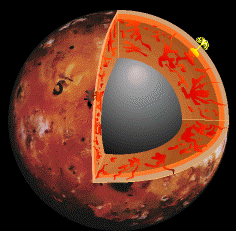These are drawings of the interior of Io.
Click on image for full size
NASA
Interior of Io
The diagram to the left shows a cutaway of the possible interior structure of Io, based on recent measurements by the Galileo spacecraft. It shows a large iron/sulphur core (the Earth's core is iron/nickel), overlain with a silicate rocky material. There is no ice present within Io.
When the Galileo spacecraft flew by Io it measured the "figure" of Io. The measurements indicated that Io was fully differentiated into two distinct interior layers, as shown in this picture.
The history of Io is one of continuous warming due to tidal forces, which results in extensive volcanism on the surface. The tidal forces cause Io to warm up the same way a coat hanger, folded back and forth will cause coat hanger to warm. As shown in the figure, possible pools of melted, liquid sulphur, encounter the hot pockets of Io's interior and boil, providing Io with geysers on the surface.
With such extensive heating, it is possible that the core may be provided with motions sufficient for a magnetic field.
You might also be interested in:
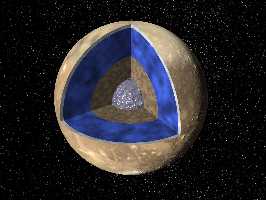
Differentiation is a scientific term which really means "to separate". In their earliest history, elements which comprised the planets and moons would part into separate regions, if the body was warm enough.
...more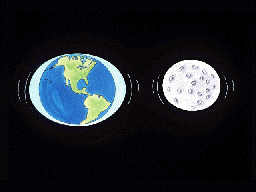
The force of gravity caused by an object gets weaker as you move farther away from that object. In this picture, the Earth is pulling on the Moon, and the Moon is pulling on the Earth. The Moon pulls more
...more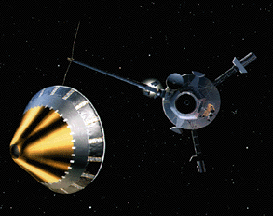
The Galileo spacecraft was launched on October 19, 1989. Galileo had two parts: an orbiter and a descent probe that parachuted into Jupiter's atmosphere. Galileo's primary mission was to explore the Jovian
...more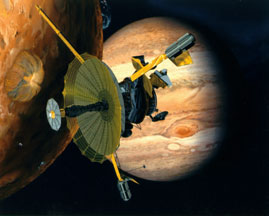
The Galileo spacecraft, which has been orbiting Jupiter since 1995, has finally reached the end of its road. On September 21, 2003, Galileo will make a fiery plunge into Jupiter's atmosphere and be vaporized.
...more
Amalthea was discovered by E Barnard in 1872. Of the 17 moons it is the 3rd closest to Jupiter, with a standoff distance of 181,300 km. Amalthea is about the size of a county or small state, and is just
...more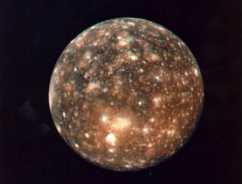
Callisto was first discovered by Galileo in 1610, making it one of the Galilean Satellites. Of the 60 moons it is the 8th closest to Jupiter, with a standoff distance of 1,070,000 km. It is the 2nd largest
...more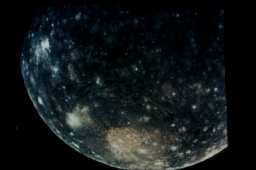
Most of the moons and planets formed by accretion of rocky material and volatiles out of the primitive solar nebula and soon thereafter they differentiated. Measurements by the Galileo spacecraft have
...more


